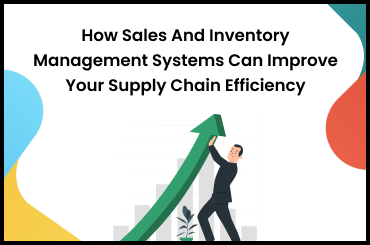Cashless payments have changed the way of doing business and handling the cash flow. Implementing cashless transactions helps Indian SMEs effectively manage operations, such as inventory management, finance, and more. Digital payment methods allow you to keep records of all sales and purchase orders for easy access.
Manufacturers can use this data to make better decisions and improve productivity and operations. Let’s understand the importance and future of cashless transactions and how they can improve inventory management for Indian SMEs.
Understanding Cashless Transactions
Cashless transactions are methods of paying money through digital means instead of physical cash and coins. It includes payment through debit cards, credit cards, UPI, e-wallets, and other online mediums. The cashless payment system is becoming popular due to convenience, fast payment, and security.
The government’s decision on demonetization in 2016 instantly increased the use of digital payment methods. During the COVID-19 pandemic, GOI introduced the UPI (Unified Payment Interfaces), which made India one of the largest cashless economies in the world. This digital initiative has completely changed the way of maintaining the accounting process and executing business operations.
Here are multiple digital payment modes that you can integrate with your inventory tracking system to simplify your business operations.
- Credit Cards
- Debit Cards
- UPI/ Mobile Payments
- Digital Wallets
- Online Banking
- Contactless Payment
- Ecommerce Payment Gateway
To learn more, click here - Cashless Economy in India: Benefits, Importance and More
Inventory Management Challenges In Indian Manufacturing
Indian SMEs often face challenges in tracking inventory levels, identifying goods’ lifespans, and forecasting demand. The unorganized inventory management system can cause delays in production planning, supply chain management, and building long-term relationships with customers and suppliers.
Adhering to regulatory policies, maintaining data accuracy, managing returns and exchanges, and tracking real time inventory levels are some frequent challenges faced by Indian manufacturers.
Common Inventory Management Challenges
The issues in supply chain management and CRM can be solved with effective inventory management. The integration of a digital payment system in your cloud-based inventory management system can allow you to improve stock management by identifying the following challenges.
- Poor inventory management due to inaccurate demand forecasting, overstocking, and understocking.
- Limited visibility on inventory that affects supply chain management and customer relationships.
- Ineffective inventory tracking and recordkeeping due to usage of legacy ERP software or depending on paper-based work.
- Inaccurate warehouse management is caused by a lack of automation in inventory tracking.
- Complexity in the supply chain is caused by poor inventory planning and management operations.
Impact Of Traditional Payment Methods On Inventory Control And Efficiency
Traditional payment methods can affect inventory management procedures due to the slow payment process. Cash payment methods can cause delays in procuring the raw materials due to the inconvenience of paying the suppliers. This results in inventory shortage that can further cause delays in production and meeting the deadline.
Lack of automation in inventory management and using the traditional payment mode can also affect recordkeeping. Manufacturers are unable to predict the exact expenses of buying a particular product. There is always a risk of paper-based bills and invoices, which makes it difficult for SMEs in the manufacturing industry to manage the balance sheet.
How Cashless Transactions Enhance Inventory Management?
Cashless payment methods allow companies to keep records of the exact amount of inventory being sold or purchased. It provides e-invoice and e-way bills that contain accurate inventory details like the number of items, description of items, material quality, and cost of each product with overall cost. These documents can be stored in digital forms that can’t be misplaced or lost.
Integrating a cashless payment system with an inventory management tool can improve cash flow and provide the following benefits:
1. Enhanced Inventory Accuracy
Digital payment methods provide insights on product purchases and timelines. This helps manufacturers predict consumer behavior and improve inventory management.
2. Real-Time Inventory Tracking
Automated billing and invoice generation through cashless systems allow SMEs to track payments in real-time. This helps in inventory control by identifying popular items and sales patterns.
3. Improved Inventory Control Methods
Digital payment solutions offer transparency in inventory levels through accurate data. This helps SMEs to improve procurement, warehouse, and supply chain management.
4. Addressing Inventory Levels
Cashless transactions provide digital records of sold items. This helps with improved inventory management techniques and procurement planning for performing and non-performing goods.
5. Inventory Replenishment Methods
Cashless payment systems in inventory management software automate the refund process. Using this manufacturers can match returned products with old purchase orders and reduce administrative tasks.
Improving Inventory Management Strategies With Cashless Transactions
Implementing cashless payment methods in helps to reduce administrative tasks and manual operations in data entry to prevent human errors. Let’s understand this better:
1. How Cashless Payments Contribute To More Accurate Inventory Forecasting?
Cashless payment modes can automatically record all sales and purchase orders in a database. SME manufacturing businesses can gain valuable information to forecast accurate market demand.
Forecasting the accurate inventory can help you make better decisions in procurement lifecycle management, production planning, and scheduling and improve the supply chain efficiency. It allows SMEs to meet the deadline and improve customer relationships.
2. Apply Cashless Transactions To Refine Inventory Management Strategies
Implementing a cashless transactions system can help to automatically monitor your stocks. Integrating the POS system can simplify your inventory management strategies with real-time updates and documentation of every transaction.
The automation helps to remove manual tasks and reduces errors. The minimum need for labor results in reduced operations costs. It also provides security against risks like theft and losses related to handling cash.
Integration Of Cashless Payment Systems With Inventory Management Software
Inventory management software is designed to provide valuable data on stock levels from multiple warehouses and stores. Integration Of Cashless Payment Systems With Inventory Management Software helps with:
Digital Payment Systems In Manufacturing
Digital payment systems offer flexibility to your customer to instantly pay for the purchase. It helps you make early payments to your supplier to get the materials on time. It also helps with:
- Fast transactions
- Improved cash flow
- Maintaining transparency
- Better recordkeeping
- Reducing labor cost
- Minimizing paperwork
- Payment Security
Examples Of Cashless Payment Methods
Traditional payments also used cashless transactions through checks and demand drafts. The digital transformation in the manufacturing business has converted these traditional formats further. Manufacturing SMEs are now using cloud inventory management software that allows the integration of multiple payment modes with support for international currencies, which are discussed below.
- Credit Card Payments
- Debit Cards Payment
- NEFT & IMPS Transactions
- E-Wallets
- UPI Apps (Google Pay, PhonePe)
Benefits Of Cashless Transactions For Inventory Management
Cashless payments have many benefits, especially for a growing SME manufacturing business.
1. Automates payment processes, reducing human errors and improving production efficiency.
2. Keeps accurate digital records of sales and purchases, aiding in stock forecasting and strategy development.
3. Cashless payment solutions provide immediate updates on transactions.
4. Minimizes the need for manual documentation, streamlining administrative tasks.
5. Enables better monitoring of cash flow, helping to maintain transparency.
6. Reduces administrative costs associated with manual payment processing and errors.
7. Offers clear and detailed records of all transactions, improving accountability.
8. Gathers valuable data on purchasing habits, helping in better customer management.
9. Supports business growth by handling increasing transaction volumes without additional manual effort.
10. Creates complete transparency across the payment process.
Best Practices For Implementing Cashless Transactions
Implementing a cashless transaction system requires selecting the right online payment methods. It should integrate with your existing system and work as per government regulations. Here are the best practices to follow while implementing a cashless transaction system to boost your manufacturing efficiency.
Steps To Implement
- Decide the types of cashless payment options you want to opt for based on convenience.
- Choose the right POS system that matches your digital payment needs and compatibility with your existing systems.
- Implement your integration process while transferring your payment data into the new system with the help of a reputable vendor.
- Execute the testing process to identify the issues and get them solved before integrating fully into your system.
- Train your staff about the functionality of modules.
- Inform vendors on challenges and areas of improvement.
Choosing Solutions
- Identify your transaction volume and business integration preferences.
- Make sure easy integration with your existing inventory management software for manufacturing industry.
- Look for security features that offer fraud detection and data encryption.
- Choose a system that offers multiple payment modes and currencies.
- Compare the transaction fees of different solutions and their impact on your sales margins.
- Look for features like automated recording, real-time reporting, and analytics.
- Check the implementation time to reduce your operational downtime.
- Request for a demo to understand if the chosen cashless solution can simplify your process.
Simplify Your Inventory Management With TranZact For Improved Cashflow
The manufacturing is moving ahead towards Industry 4.0. With cashless transactions, you can manage a large number of transactions easily in less time and maintain cash flow to improve your business operations. TranZact offers easy integration of a digital transactions system.
Learn Transform Business Operations with TranZact's Digital Payments in a Cashless Economy
They have a payment module that allows you to make all transactions within the app. It offers the implementation of multiple payment methods also to improve your accounting process. TranZact is designed especially for SME manufacturers in India, and takes only 14 days to implement it in your business.
Choose TanZact now to effectively automate your digital transactions.
FAQs
1. How do cashless transactions improve inventory management?
Cashless transactions improve inventory management in the following ways:
- Real-time inventory tracking
- Accurate inventory forecasting
- Address inventory levels
- Effective order replacement
- Improve inventory control
2. What are the benefits of using digital payment systems in manufacturing?
The benefits of using digital payment systems in manufacturing are:
- Improved workflow
- Reduced paperwork
- Improved Security
- Faster Transactions
- Cost Savings
- Complete Traceability
3. Which cashless payment methods are most effective for inventory management?
The cashless payment methods that are most effective for inventory management are:
- Internet Banking
- UPI Transactions
- Mobile Apps
- Credit and Debit Cards
4. What role does inventory management software play in leveraging cashless transactions?
Inventory management software plays an important role in cashless transactions as it helps to improve order management with accurate inventory data and transaction tracking.
5. What are the steps to implement a cashless transaction system?
The steps to implement a cashless transaction system are as follows:
- Choose the right POS system.
- Transfer the financial data to the new system.
- Implement the installation process.
- Train your employees.Monitor the new updates.















